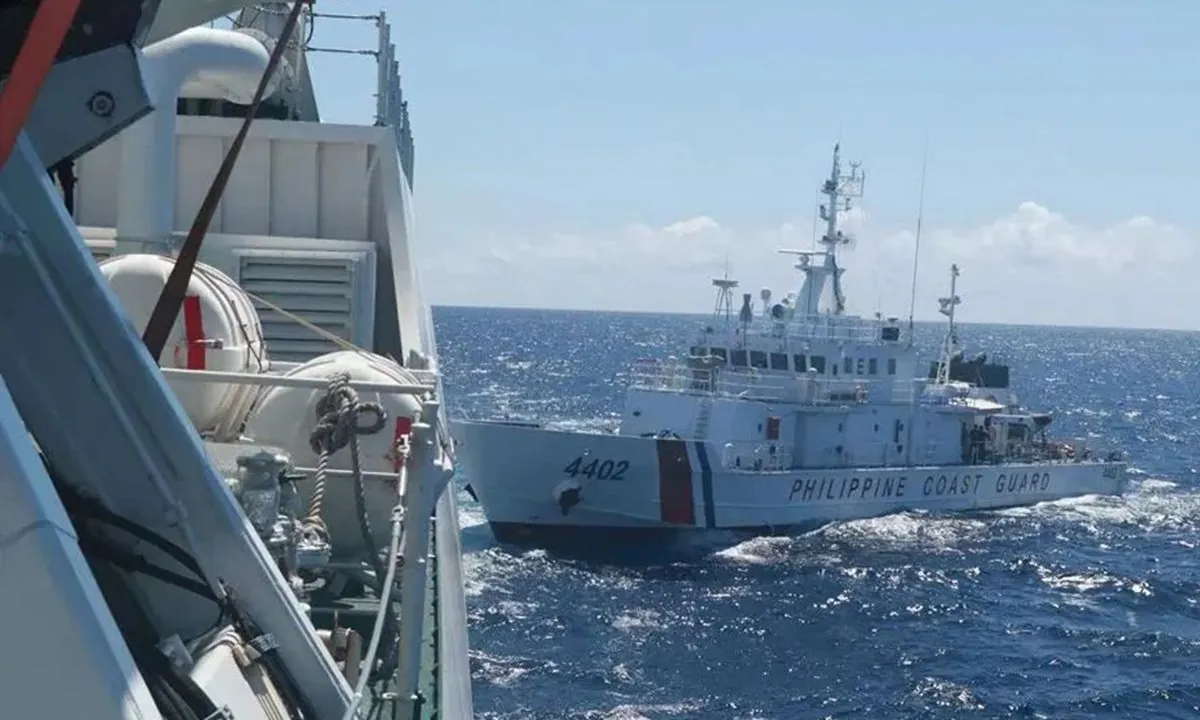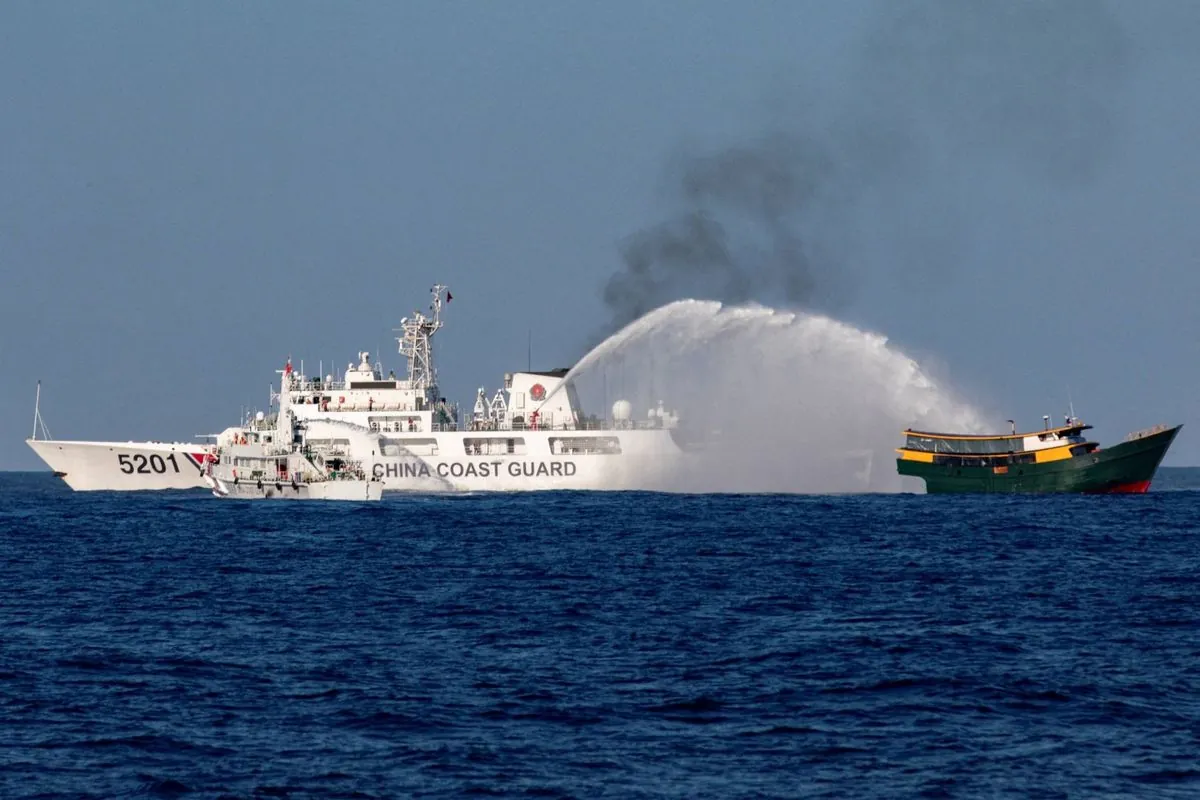South China Sea Tensions Escalate as China and Philippines Clash at Sabina Shoal
A recent confrontation between Chinese and Philippine vessels at Sabina Shoal highlights ongoing tensions in the South China Sea. Despite diplomatic efforts, the dispute remains unresolved, with broader regional implications.

On August 19, 2024, a fresh clash between China and the Philippines occurred at Sabina Shoal in the South China Sea, underscoring the persistent tensions in the region. This incident is the latest in a series of confrontations that have taken place over the past few months, despite diplomatic efforts to ease the situation.
The disputed Sabina Shoal, a 14-mile stretch of uninhabited low-lying reefs, falls within the Philippines' exclusive economic zone but is claimed by China as part of its broader assertion of sovereignty over the Spratly Islands. The South China Sea, covering approximately 3.5 million square kilometers, has been a hotbed of territorial disputes, with China claiming about 90% of the area through its "nine-dash line" demarcation.
According to the Philippine Coast Guard, two of its vessels encountered "dangerous and illegal maneuvers" from Chinese ships, resulting in damage to both Philippine boats. The Chinese Coast Guard, however, accused the Philippine vessels of "illegally intruding" into the waters near the shoal and claimed that one Philippine vessel "deliberately collided" with a Chinese boat.
This incident follows a series of escalatory events in the region. In June 2024, Chinese Coast Guard boats rammed Philippine rubber boats near the Second Thomas Shoal, a Philippine military outpost. Earlier in August, Chinese air force planes dropped flares in front of a Philippine Air Force plane over Scarborough Shoal, another disputed area located about 120 nautical miles west of the Philippines.

Despite a recent agreement reached in July 2024 regarding Philippine resupply missions to its outpost on Second Thomas Shoal, the overall situation remains tense. Experts argue that such limited diplomatic arrangements are insufficient to address the broader conflict. Greg Poling, director of the Asia Maritime Transparency Initiative at the Center for Strategic and International Studies, stated, "Anybody who thought it was going to lead to a larger de-escalation of tensions was engaged in wishful thinking."
The South China Sea's strategic importance cannot be overstated. It is estimated to hold about 11 billion barrels of oil and 190 trillion cubic feet of natural gas, with over $5 trillion worth of global trade passing through its waters annually. This economic significance, coupled with geopolitical considerations, has led to increased militarization and territorial disputes in the region.
The United States, as a treaty ally of the Philippines under the 1951 U.S.-Philippines Mutual Defense Treaty, has reaffirmed its commitment to defend the country in the event of a conflict. However, Manila has been cautious in calling for direct U.S. involvement, seeking to manage its own affairs and avoid being perceived as a pawn in great-power rivalry.
Bonnie Glaser, managing director of the German Marshall Fund's Indo-Pacific program, explained China's strategy: "If China can keep the United States out, it stands a better chance of having control over the vast majority of the South China Sea, and I think that's exactly what Beijing is trying to achieve."
The ongoing dispute has broader implications for regional stability and international law. In 2016, the Permanent Court of Arbitration ruled in favor of the Philippines, rejecting China's historical claims in the South China Sea. However, China has continued to assert its presence in the region, including building artificial islands on several reefs in the Spratly Islands since 2013.
As tensions persist, the Association of Southeast Asian Nations (ASEAN) has been working on a Code of Conduct for the South China Sea since 2002, aiming to establish guidelines for peaceful resolution of disputes. Meanwhile, the United States conducts regular "freedom of navigation" operations in the area to challenge what it sees as excessive maritime claims.
The recent clash at Sabina Shoal serves as a stark reminder that despite diplomatic efforts, the South China Sea remains a potential flashpoint for conflict. As Greg Poling noted, "At the end of the day, there's no grounds for Beijing and Manila to come up with a sustainable way to jointly manage the whole of the disputed area, so it's just putting out fires."


































